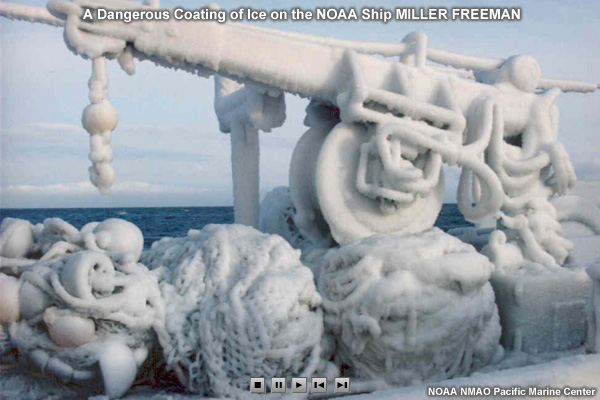Vessel IcingEffects and Causes
Vessel icing from sea spray can result in loss of stability and even capsizing of ships, particularly smaller vessels. Ships with large superstructures and low freeboard are particularly vulnerable.
Sea spray icing is caused by a combination of several environmental factors, including
- Air Temperature
- Water Temperature
- Freezing Temperature of Water
- Wind Speed
- Wind Direction, Relative to the Ship
- Wave Characteristics
- Wave Size
- Wave Length
- Wave Propagation Direction
Icing occurs when sea spray becomes supercooled and freezes on contact with the ship. It can start to occur when the air temperature falls below the freezing point of water, -1.7°C (29°F) for sea water. Icing potential increases as air and water temperatures drop and wind speed increases. Icing rarely presents a problem if the water temperature is above 6°C.
The most intense icing conditions occur within 200 km of a shore or ice edge with strong, cold offshore flow. As air moves offshore, it gradually warms in response to heating from the sea. Once the air temperature rises above freezing, icing does not present a problem.
Wind and wave characteristics, relative to the direction the ship is heading, determine how much sea spray strikes the vessel superstructure. Travelling faster and into the wind and waves will increase sea spray reaching the deck and superstructure, and thus increase icing. Smaller boats will be affected more strongly. Ships that have been "cold soaked" in very cold temperatures for several days may experience more severe icing than otherwise expected.
